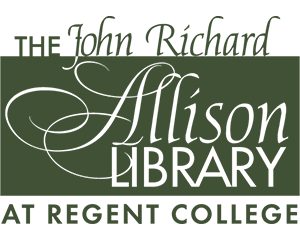Finding Books on our Shelves
 Processing Request
Processing Request
As with most academic libraries in North America, the Allison Library is organized according to the Library of Congress Classification System. The Library of Congress system arranges items according to 21 categories of knowledge, labelled from A-Z (excluding I, O, W, X, and Y). Each category is further subdivided by additional letters and numbers (see following tab). Most of the resources in the Allison Library collections are arranged under the “B” section.
|
A |
General Works |
G |
Geography |
|
B |
Philosophy, Psychology, Religion & Anthropology |
H |
Social Sciences (Economics, Sociology) |
|
B-BJ |
Philosophy, Psychology, Religion |
J |
Political Science |
|
BL |
Religions, Mythology, Rationalism |
K |
Law |
|
BM |
Judaism |
L |
Education |
|
BP |
Islam |
M |
Music |
|
BQ |
Buddhism |
N |
Fine Arts |
|
BR |
Christianity |
P |
Language & Literature (including Greek, PA, and Hebrew, PJ) |
|
BS |
The Bible, Works about the Bible |
Q |
Science |
|
BT |
Doctrinal Theology |
R |
Medicine |
|
BV |
Practical Theology |
S |
Agriculture |
|
BX |
Christian Denominations |
T |
Technology |
|
C |
Auxiliary Sciences of History (Archeology, Calendars, Inscriptions, Genealogy, Biography, etc.) |
U |
Military Science |
|
D |
History (General) and History of Europe |
V |
Naval Science |
|
E-F |
History of Americas |
Z |
Bibliography (including bibliographies on specific subjects, such as OT or NT) |
Finding the Call Number
When you find a book you are looking for in our catalogue, you will see a call number (e.g. BS1625.3 .R63 1990):
Reading the Call Number
Call numbers will usually have three parts: BS1625.3 .R63 1990 consists of 1) a set of letters indicating the subject (BS); 2) a number which subdivides the general subject (1625.3); and 3) a letter and number combination representing the author of the item (R63).
Many items will also include the year the book was published (1990), a volume (e.g., v. 1), or copy number (e.g., c. 1).
The call number is found vertically on the spine of the book (or the bottom left-hand corner for thin books and pamphlets):

Finding the Book's Location
In addition to call numbers, the catalogue will tell you where in the library a book is to be found. The Allison Library currently has 11 locations for physical resources: Journals, Media, Reference, Rare Books, Stacks, New Book Display, Children's, On Display, Staff Recommends, Theses, or 2 Hour Reserve. The location of some of the sections can be found on our Library Floor Plan. Only books in Media, Stacks, New Book Display, Children's, On Display, Staff Recommends, and 2 Hour Reserve can be checked out. 2 Hour Reserve items should be requested at the Circulation Desk.
Below are some questions you should ask when evaluating the sources you find:
Author
- How credible is the author?
- Is the author recognized as an authority in the research field?
Publication Information
- Is the publisher a recognized and respected source in the research field?
- How current is the source? Is it twenty years out of date? Some information becomes dated when new research is available, but other sources remain relevant fifty or a hundred years later.
- Is there an updated edition?
Audience
- For whom was the book written? A scholarly or popular audience?
- Consider the tone, style, level of information, and assumptions the author makes about the reader. Are they appropriate for your needs?
Overall
- Are arguments very one-sided with no acknowledgement of other viewpoints?
- Are there broad generalizations that overstate or oversimplify the matter?
- Do you think there's enough evidence offered? Is the coverage comprehensive? (As you learn more and more about your topic, this gets easier.)

